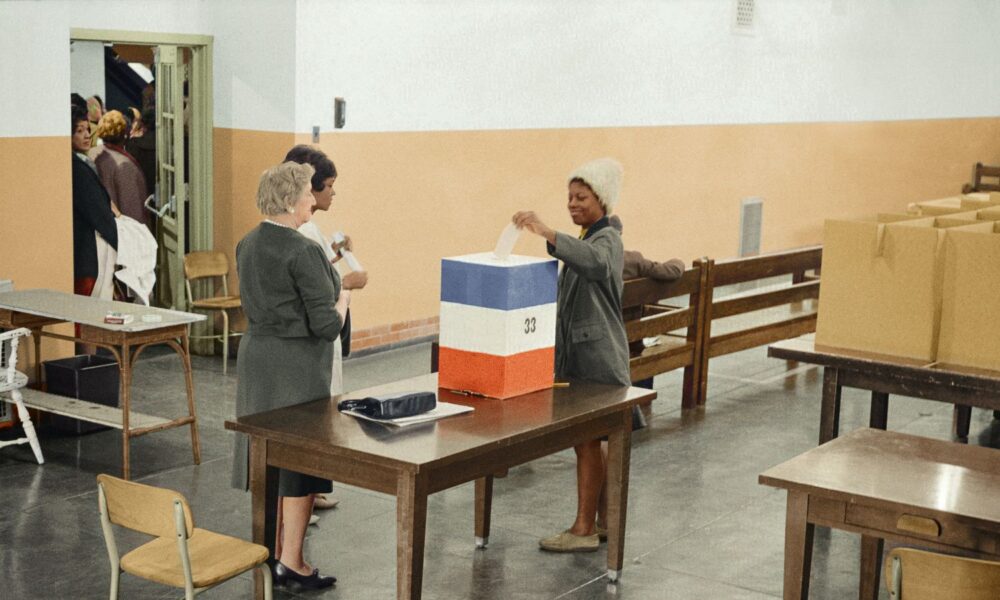As of this morning, over 21 million people have exercised their right to vote in the November 2022 election, according to @ElectProject data collection at United States Election Project. This includes at least 8,240,328 in-person early votes and 12,793,016 mail-in ballots returned across 43 states with available data. To date, the overall election returns suggest that more people are voting early, continuing a trend from the 2020 election. Turnout may well break mid-term election records in many states, as both Democratic and Republican voters show high levels of mobilization and concerns about the other party winning.
Of course, high overall turnout expectations can mask the discriminatory effects of formal barriers to voting erected since 2020, state-led efforts to target and suppress specific communities of voters through newly appointed “election crimes” law enforcers, as is occurring in Florida, and privately-led disinformation and voter intimidation tactics that are well underway in states like Arizona. That is, even if mass mobilization and early voting increases total turnout, restrictive laws and voter intimidation may still reduce the participation of targeted voters, in violation of the Voting Rights Act and the 1993 National Voter Registration Act.
Ensuring free and fair elections requires monitoring early election returns and analyzing post-election results using established scientific standards. At the Center for Science and Democracy, we have identified some key statistics in key states for you to keep an eye on.
Early voting statistics in targeted communities
Comparing early voting results across regions and time can be an effective way to estimate the impact of efforts to manipulate voters. Reports from multiple news agencies earlier this year revealed that the former president’s co-conspirators have attempted to train thousands of election challengers in hopes of causing chaos in Democratic Party strongholds in states with close races. As a result, many observers are paying close attention to election returns in cities like Atlanta, Detroit, Cleveland, Houston, Las Vegas, Milwaukee, Philadelphia, Pittsburgh, and Phoenix. Table 1 displays early voting (by-mail and in-person, respectively) trends from 2018, 2020, and 2022 (through late October) in these communities.
Table 1. Trends in by-mail and early in-person voting in select communities (counties)

(Source: EAVS data and @ElectProject)
Some places are sustaining increased voting by-mail that started during 2020 (Pittsburgh, Philadelphia, Milwaukee). Nevada has also moved to universal-vote-by-mail since 2020. In other places, however, early voting patterns seem to have returned to 2018 levels. Georgia voters face new difficulties put in place that may be driving a huge reduction in voting-by-mail in Atlanta, while in-person voting remains high. Similarly, early voting of all kinds in Cleveland looks even lower than 2018 levels, with only 143,000 voters requesting ballots this year, compared to over 156,000 by-mail ballots counted in 2018. In Arizona, voters have long relied on absentee ballots for voting, but it is not yet clear how newer restrictions will impact early in-person voters. As early votes keep coming in, the impact of changing laws will become more clear. In addition to comparing across time, it is also likely that within-state comparisons with nearby counties can reveal voting inequalities if they emerge within different populations.
Post-election ballot processing in targeted communities
Election conspiracy groups like True the Vote are “watching” (and occasionally showing up armed and masked at) ballot dropboxes in states like Arizona in order to make allegations of voter fraud with local law enforcement. Similar groups across the country, including those associated with seditionists like the Oath Keepers, have embraced the thoroughly discredited film “2000 Mules” that claims people were paid to travel among drop boxes and stuff them with fraudulent ballots during the 2020 presidential vote, which never happened.
The real goal with both True the Vote and Trump attorney Cleta Mitchell’s operation is to challenge ballots in these Democratic strongholds. If those efforts are successful, they will show up in higher ballot rejection rates. There is considerable variation in rejection rates between regions, and our exploration in 2020 showed that voters of color already face higher rejection rates. This will be a crucial statistic to monitor as ballots are being processed post-election. Comparison across time (Table 2, again using EAVS data), and across communities within states will be necessary to determine whether some types of voters are more likely to have their ballots rejected.
Table 2. Ballot Rejection Rates (as percent of total), 2018 and 2020

Obviously, this is not the first time in this country that one group has attempted to terrorize others at the polls for political purposes. Voters must be defiant in the face of intimidation. And in the spirit of Halloween, some Arizona voters are considering dropping off their ballots today dressed as mules, or jackasses, in a show of pro-voter defiance against True the Vote and other election trolls. It would totally restore my faith in humanity to see masses of asses dropping off ballots today:

Precinct-level voting patterns
Finally, more granular analysis of data will be possible once precinct-level election returns are released in most jurisdictions after Election Day. Since candidate vote totals will also be available, it will be possible to determine how changes in voting patterns impacted election outcomes. A number of analytic techniques can be used on precinct-level data in order to estimate voting inequalities and possibilities of election manipulation. For example, comparing the correlation between turnout and candidate or party vote shares has been used to reveal instances of election fraud. Figure 1 demonstrates how this technique can work on an example where there is not evidence of ballot stuffing, the 2018 Georgia Governor’s election results from Fulton County.

In this example, a clear pattern of greater support for Brian Kemp (y-axis) in high turnout (x-axis) precincts is evident, as Kemp only won in precincts where turnout was greater than 50 percent. By contrast, Stacey Abrams won many Fulton County precincts by 90 percent or better, across a range of low and high turnout precincts. However, we do not see classic “ballot stuffing” patterns where candidates are receiving extremely high vote shares in extremely high turnout precincts. This type of precinct-level analysis can also be used to identify irregularities in early voting and differential impacts on types of voters concentrated in particular precincts.
Courageous, cool, and confident
Protecting our elections is a cause that everybody can contribute to, and it starts with being courageous enough to defend voters in your community. Do not give in to voter intimidation, and be prepared to call out bad actors who may be keeping others from feeling safe to exercise their right to vote. These intimidation tactics may seem more explicit compared to the recent past, but they are among the oldest tricks in the book. Moreover, challenges to votes based on amateur tactics, including baseless allegations of vote “harvesting,” may be illegal abridgements of the right to vote. If you observe possible intimidation or disruption of the electoral process, you can call 866-OUR-VOTE (866-687-8683) and speak with an Election Protection volunteer. The Brennan Center has also published a resource guide for election administrators and those who are prepared to defend our right to vote.
Second, be cool. Be cool until every vote is counted. The ballots are going to take a while to count, especially where voting by-mail is permitted without restrictions. Several state legislatures have actually forbidden election administrators from processing mail ballots until Election Day, intentionally delaying the vote count. Having the sort of information provided above, nearly all of which you can collect from your local election administration, can go a long way toward countering the sort of disinformation voters will inevitably encounter between Election Day and the release of official vote counts.

Third, be confident. We will get through this election season, even if it requires litigation and expert testimony based on election returns, even if there is chaos instigated by election trolls, even if it is necessary to mobilize and take to the streets, in the event that subversives attempt to overturn or render an election indecisive. We don’t know if anything that dramatic will happen, and it probably won’t. The best we can do now is encourage everyone to vote, wait for the votes to be counted, and be confident that we have the means to protect the integrity of our elections. And maybe dress up like a jackass. Happy Halloween.

